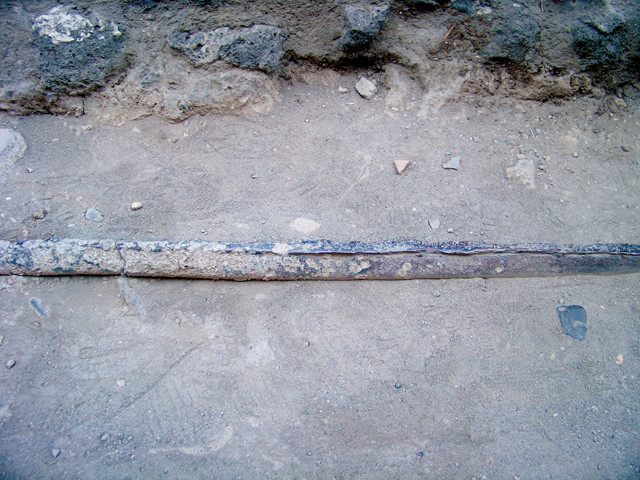
by Mary Caperton Morton Wednesday, November 15, 2017

Lead pipes were used in water distribution systems in ancient Roman cities. Credit: Larry, CC BY 2.0.
The ancient Romans may have had advanced water distribution systems, but the water pipes they used were highly toxic. Many Roman-era water pipes were lined with lead, leading some archaeologists to suspect a public health crisis among Romans that may have contributed to the empire’s eventual fall. But others point out that the high levels of calcium carbonate in the Romans’ water supply would have quickly coated the pipes with scale, limiting the exposure of drinking water to lead. However, a new study suggests lead wasn’t the only concern: A sample of pipe from Pompeii dating to A.D. 79 has shown that the Italian city’s drinking water may have also contained alarmingly high levels of antimony. Antimony is an acutely poisonous element, ingestion of which can lead to severe vomiting, diarrhea, dehydration and/or death from ailments such as kidney failure and cardiac arrhythmia.
In the new study, published in Toxicology Letters, Philippe Charlier of the Max Fourestier Hospital in Nanterre, France, and colleagues used a mass spectrometer to analyze a small section of metal pipe found in the ruins of Pompeii, which was destroyed by the catastrophic eruption of Mount Vesuvius in 79. The testing revealed high levels of antimony — which is naturally abundant in the volcanic soils of the region — in mineral deposits lining the pipe.
© 2008-2021. All rights reserved. Any copying, redistribution or retransmission of any of the contents of this service without the expressed written permission of the American Geosciences Institute is expressly prohibited. Click here for all copyright requests.